Do you have a question about the Bosch AUTODOME 7000 HD and is the answer not in the manual?
Log into the camera using Internet Explorer or Chrome by typing the default IP address.
Provide the default username 'service' and password 'Default' to access the camera.
Click on 'Configuration' to access the main menu of the camera settings.
View the live camera feed and access PTZ controls from the main interface.
Select 'Network' from the configuration menu to access network-related options.
Click on 'Network Access' to configure IP addressing and network parameters.
Set DHCP to 'Off' to manually configure IP address, subnet mask, and gateway.
Enter the IP address, subnet mask, and gateway address for the camera.
Specify DNS server addresses for network name resolution.
Click 'Set and Reboot' to save network changes and restart the camera.
Log back into the camera using the assigned IP address after the reboot.
Navigate to 'Network' and then 'DynDNS' to configure dynamic DNS settings.
Set the 'Enable DynDNS' option to 'Off' to disable the service.
Select 'Advanced' under the 'Network' menu for further network configurations.
Set the Real-Time Streaming Protocol (RTSP) port to 554.
Set the NTCIP port to 4439 and the address to 1.
Navigate to 'Network' and then 'Network Management' for relevant settings.
Enable SNMP and disable UPnP for network management.
Navigate to 'Network' and then 'Multicast' to configure streaming.
Set multicast addresses and ports for Stream 1 and Stream 2.
Navigate to the 'General' section in the configuration menu.
Enter the camera name or location in the 'Identification' settings.
Set the date format, time zone, and time synchronization for the camera.
Configure camera name and OSD stamping to appear on video feeds.
Navigate to 'Camera' and then 'Encoder Profile' to configure video encoding.
Set profile name, target bit rate, and maximum bit rate for Profile 6.
Navigate to the Profile 8 tab to set its specific video encoding parameters.
Set profile name, target bit rate, maximum bit rate, and video resolution for Profile 8.
Navigate to 'Camera' and then 'Encoder Streams' to configure video streams.
Configure property stream 1 and stream 2 with their respective non-recording profiles.
Navigate to 'Camera' and then 'Picture Settings' to adjust image parameters.
Configure white balance, saturation, sharpness, and other image settings.
Adjust focus speed, iris settings, and zoom parameters for the camera lens.
Set PTZ speed, inactivity periods, and auto pan limits for camera movement.
Navigate to 'Service' and then 'Maintenance' for camera upkeep tasks.
Browse and upload the provided firmware file to update the camera software.
Check the 'System Overview' to confirm the firmware has been loaded successfully.
Click on the live view and PTZ controls to verify functionality.
Log out of the camera interface to ensure secure session termination.
Log into the camera using Internet Explorer or Chrome by typing the default IP address.
Provide the default username 'service' and password 'Default' to access the camera.
Click on 'Configuration' to access the main menu of the camera settings.
View the live camera feed and access PTZ controls from the main interface.
Select 'Network' from the configuration menu to access network-related options.
Click on 'Network Access' to configure IP addressing and network parameters.
Set DHCP to 'Off' to manually configure IP address, subnet mask, and gateway.
Enter the IP address, subnet mask, and gateway address for the camera.
Specify DNS server addresses for network name resolution.
Click 'Set and Reboot' to save network changes and restart the camera.
Log back into the camera using the assigned IP address after the reboot.
Navigate to 'Network' and then 'DynDNS' to configure dynamic DNS settings.
Set the 'Enable DynDNS' option to 'Off' to disable the service.
Select 'Advanced' under the 'Network' menu for further network configurations.
Set the Real-Time Streaming Protocol (RTSP) port to 554.
Set the NTCIP port to 4439 and the address to 1.
Navigate to 'Network' and then 'Network Management' for relevant settings.
Enable SNMP and disable UPnP for network management.
Navigate to 'Network' and then 'Multicast' to configure streaming.
Set multicast addresses and ports for Stream 1 and Stream 2.
Navigate to the 'General' section in the configuration menu.
Enter the camera name or location in the 'Identification' settings.
Set the date format, time zone, and time synchronization for the camera.
Configure camera name and OSD stamping to appear on video feeds.
Navigate to 'Camera' and then 'Encoder Profile' to configure video encoding.
Set profile name, target bit rate, and maximum bit rate for Profile 6.
Navigate to the Profile 8 tab to set its specific video encoding parameters.
Set profile name, target bit rate, maximum bit rate, and video resolution for Profile 8.
Navigate to 'Camera' and then 'Encoder Streams' to configure video streams.
Configure property stream 1 and stream 2 with their respective non-recording profiles.
Navigate to 'Camera' and then 'Picture Settings' to adjust image parameters.
Configure white balance, saturation, sharpness, and other image settings.
Adjust focus speed, iris settings, and zoom parameters for the camera lens.
Set PTZ speed, inactivity periods, and auto pan limits for camera movement.
Navigate to 'Service' and then 'Maintenance' for camera upkeep tasks.
Browse and upload the provided firmware file to update the camera software.
Check the 'System Overview' to confirm the firmware has been loaded successfully.
Click on the live view and PTZ controls to verify functionality.
Log out of the camera interface to ensure secure session termination.
| Brand | Bosch |
|---|---|
| Model | AUTODOME 7000 HD |
| Category | Security Camera |
| Language | English |

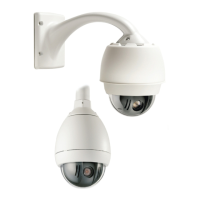
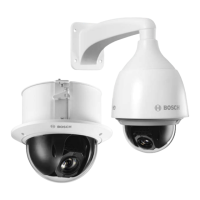
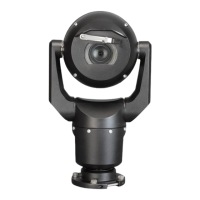

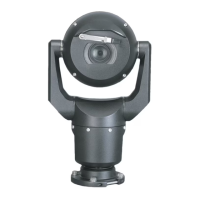


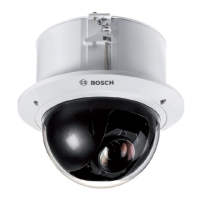
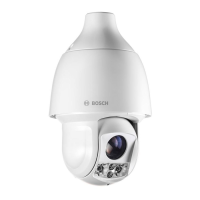
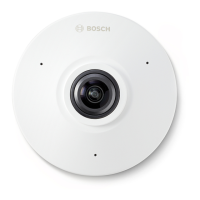

